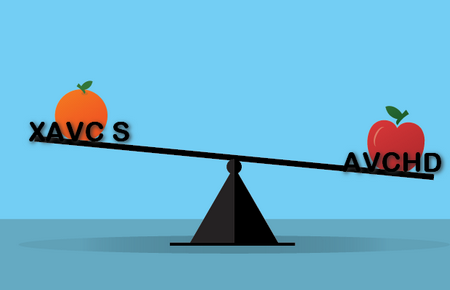
It should give you some sense of what's going on, though it'll probably more dramatic than the video difference. Try doing some simple image adjustments to both.

It should give you some sense of what's going on, though it'll probably more dramatic than the video difference.Ĭhoose a good RAW photo and export it at JPEG 12 and JPEG 6 (LR 100 and 50 or so). Neither is necessarily right or wrong.Ĭhoose a good RAW photo and export it at JPEG 12 and JPEG 6 (LR 100 and 50 or so). Some will swear by Extra Fine 'just in case'. Some will insist that Medium looks great. Many people will never notice the difference. The best comparison is to JPEG Medium/Fine/Extra Fine. I know that is not a precise comparison, but I am trying to get a simplified handle on the video difference. Somewhat, but not exactly like, RAW has more info contained in the file, as compared to JPEG? This sounds like a logical, concise explanation.Īm I correct in thinking that the XAVC, due to it's higher bit rate, has more "info" contained in it compared to a video using AVCHD or MP4?

XAVC S happens to meet the standards set by news organizations for use in broadcast. At the same time, a "gimmick" is not "needed" by anyone, by definition. That hinges on different things entirely. None of these things are related to whether or not you're a professional.
#SONY XAVC S FORMAT FULL#
If however you can see the artifacts inherent in 24 mbit AVCHD, and especially if you wish to make any adjustments in post (from simple brightness/contrast/WB to full blown color grading), then you will see a real benefit from XAVC S. If you think YouTube videos look great, or don't see artifacts in the AVCHD recordings off the camera, then you're unlikely to appreciate XAVC S. Whether or not you will notice it depends on 1) your ability to see video compression artifacts in the first place 2) the extent to which you intend to do post-production work on the captured video. I suspect the videos might not copy directly to an iOS device, due to some artificial limitations in iTunes, but I have not tried. Since they're ultimately both MPEG Layer 4 videos with different encoding settings, the same decoder can handle both.

#SONY XAVC S FORMAT SOFTWARE#
The S version does not improve color space or bit depth, which are still at 8 bit 4:2:0.Īt this point in time, I have not encountered any software that can handle AVCHD but not XAVC S. In short, it boosts the bitrate and improves how much "bang for the buck" the camera is getting out of those bits. It improves the overall bitrate, but also uses a more aggressive profile for the encoder that produces better efficiency than AVCHD. It's the lowest quality version of Sony's XAVC codec, which itself is a variation of the h.264 codec used in normal AVCHD.


 0 kommentar(er)
0 kommentar(er)
